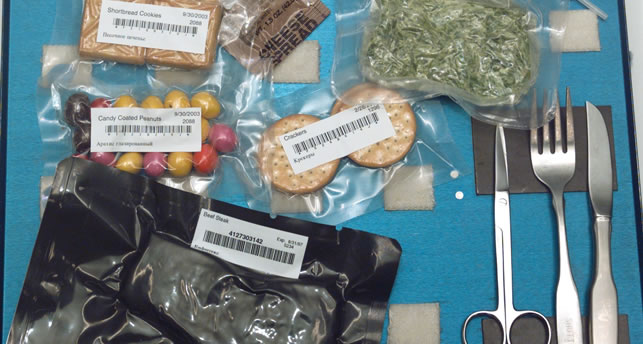Colin Moors looks into the progress of food technology, a subject close to his heart… and his stomach.
“Ground control to Major Tom, take your protein pills and put your helmet on…”
When Bowie wrote the lyric, we had already seen a man in space and any science geek worth their salt would have known about the dehydrated ice cream they took with them. Of course, the food magazines went crazy conjecturing about the possibility that we’d all be eating a pill for breakfast, lunch and dinner every day and bemoaning the death of ‘real’ food. As we know now, that didn’t pan out quite as badly as the critics suspected, and we can still enjoy an artery-clogging burger with impunity.
But what of the future of food in the days in which we can print someone a new hip or jaw? It may seem as if the technology behind food has stagnated and that there are no worlds left to conquer, but this is really not the case. For example, 3D printing is not all body parts and tools.
Good chefs will tell you that baking is science and that cooking is all about the feel and sense of the experience, but manufacturers of 3D printers will be keen to challenge that notion in the upcoming years. Whereas mainstream 3D printers manufacture items by building up layers of plastic or metal (a process known as ‘sintering’), food printers will do the same with sugar, chocolate or more recently, pastry dough. The process is very much in its infancy, but it will surely not be too long before technology advances to the stage where it is possible to ‘print’ using different textures, flavours and ingredients. Sadly, the day I can order from Pizza Hut and simply press the Print button are a long way off, but at least I get my exercise walking to the old-fashioned pizza shop.
Science is playing a very important part in the modern history of food, of course. Alongside the purists who wouldn’t condone the ‘invasion’ of science in their kitchens, there are the new rock stars of cuisine, who embrace every technical detail and scientific method to push the boundaries of food production. Enlightened foodies will have heard of people like Ferran Adrià, Heston Blumenthal and the Roca brothers who will stop at nothing to ensure they present the best plate of food you’ve ever eaten – and they do a lot of it with science.
Those mentioned above owe a debt of gratitude to the author of a largely unheralded book of some 850 pages, published in 1984, before molecular gastronomy existed. Harold McGee’s outstanding On Food & Cooking is the bible of food science, written by a true food nerd and scientist – and I mean that in a good way. He deconstructs food using diagrams, tables, chemistry and physics in glorious detail. It’s a book I would recommend to anyone. If you need a clue about his dedication, he has over three pages on Oriental fish sauces.







